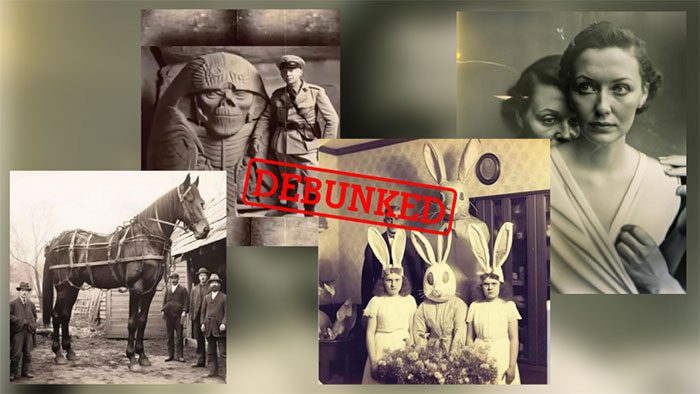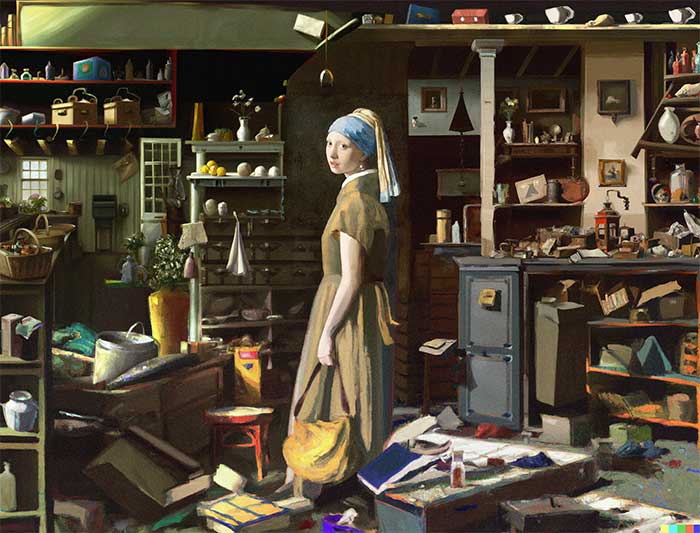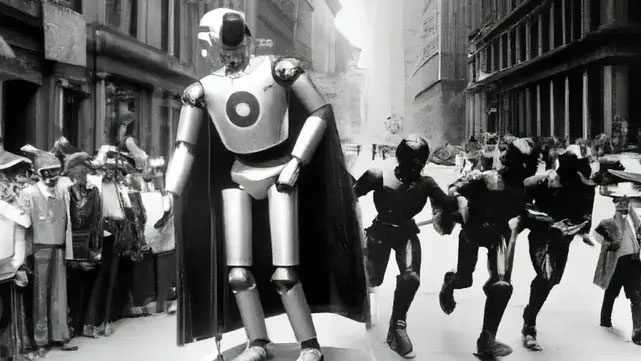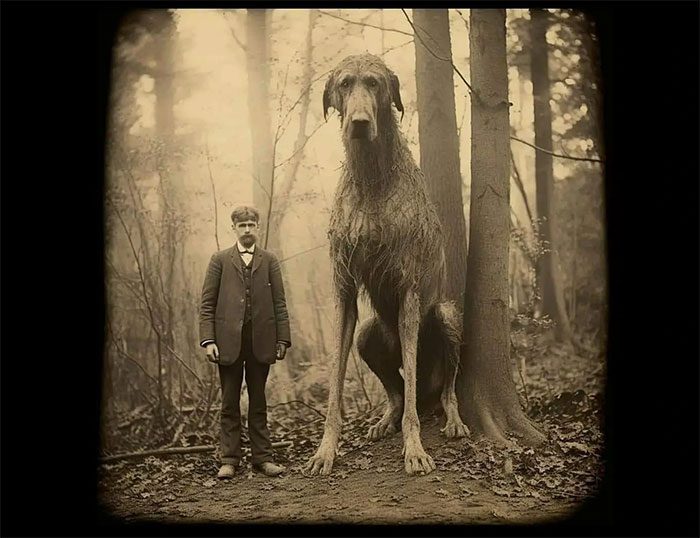Artificial Intelligence (AI) has revolutionized many aspects of our lives, including how we access and interpret historical information.
While AI has the potential to enhance historical research and analysis, it also poses a significant challenge: the ability to create convincing fake historical information. This article will explore the new context of AI-generated historical content, delving into its potential applications, ethical concerns, and its impact on our understanding of the past.

AI has the ability to recreate historical events and figures.
AI-Supported Historical Reconstruction
AI has the ability to bring historical events and figures to life in ways that were previously unimaginable.
One of the significant applications of AI in history is the restoration and preservation of historical artifacts. Machine learning algorithms can analyze damaged or degraded artifacts, such as manuscripts or ancient artworks, and digitally restore them to their original state. This process helps historians and researchers gain a more accurate understanding of the past.
AI can also be used to create vivid virtual recreations of historical sites, buildings, and landscapes. By utilizing 3D models and AI-generated historical data, we can turn back time and explore ancient cities, temples, and monuments as they once were. This technology enables historians to conduct virtual archaeology and gain new insights into the past.

AI can create virtual representations of historical figures.
AI-driven algorithms can also bring historical figures to life, at least in a digital sense. By analyzing historical texts, portraits, and other records, AI can generate virtual representations of historical personalities, allowing us to interact with them through immersive experiences. While this can offer unique educational opportunities, it raises questions about accuracy and historical authenticity.
AI-Generated Historical Texts
Artificial Intelligence can be used to generate historical texts, including documents, letters, and even entire books.
AI models like GPT-3 (Generative Pre-trained Transformer 3) have demonstrated the ability to produce text that mimics the writing style of historical figures or specific time periods. This technology can be used to create seemingly historically accurate documents, potentially serving educational or research purposes.

An AI-generated image of early robots. (Source: Public Domain).
The ease with which AI can generate texts also presents a significant challenge. Malicious actors could use AI to create forged historical documents, spread misinformation, or even fabricate entire events from the past. This raises concerns about the reliability of historical sources and the potential for AI-generated forgeries to mislead researchers and the public.
Addressing the issue of AI-generated historical texts requires the development of tools and techniques to detect such content. Researchers and organizations are exploring AI algorithms that can identify texts produced by AI models, helping to ensure the integrity of historical research and publications.
Ethical and Historical Implications
As AI-generated historical content becomes more prevalent, questions of authenticity become paramount. Can we trust AI-generated texts and historical recreations to accurately represent the past? Historians and researchers must critically evaluate AI-generated content and consider its inherent biases and inaccuracies.

Another AI-generated image of a giant horse. (Source: Public Domain)
AI-generated historical content, if not used responsibly, has the potential to distort our understanding of history. It could perpetuate false narratives, reinforce stereotypes, or even erase certain historical events or figures. Historians and educators have a responsibility to ensure that AI-generated content adheres to principles of accuracy and objectivity in history.
The integration of AI into historical research and education presents exciting opportunities for innovation. However, it also requires achieving a delicate balance between embracing technological advancements and maintaining traditional methods of historical inquiry. Historians must navigate this evolving landscape thoughtfully and ethically.
Countering AI-Generated Historical Falsifications
To address the challenges posed by AI-generated historical falsifications, several strategies and safeguards are being considered.
Historians and researchers must apply rigorous verification and fact-checking processes when encountering AI-generated historical content. Cross-referencing with established historical sources and conducting thorough research remains essential to ensure the accuracy of information.

Another AI-generated image of a giant dog. (Source: Public Domain)
Creators of AI-generated historical content must be transparent about their use of AI and clearly label such content to distinguish it from verified historical sources. This transparency helps users differentiate between AI-generated content and historically accurate information.
Education plays a vital role in equipping the public with critical information evaluation skills, whether sourced from AI or traditional archives.
There is no denying that Artificial Intelligence is changing the way we interact with historical information, providing new tools for research, reconstruction, and engagement with the past. However, the rise of AI-generated historical content also poses challenges related to authenticity, accuracy, and ethics. As we navigate this evolving landscape, it is crucial for historians, educators, and the public to remain vigilant, employing rigorous fact-checking methods, transparency, and critical thinking to safeguard the integrity of history in the age of AI-generated content.


















































